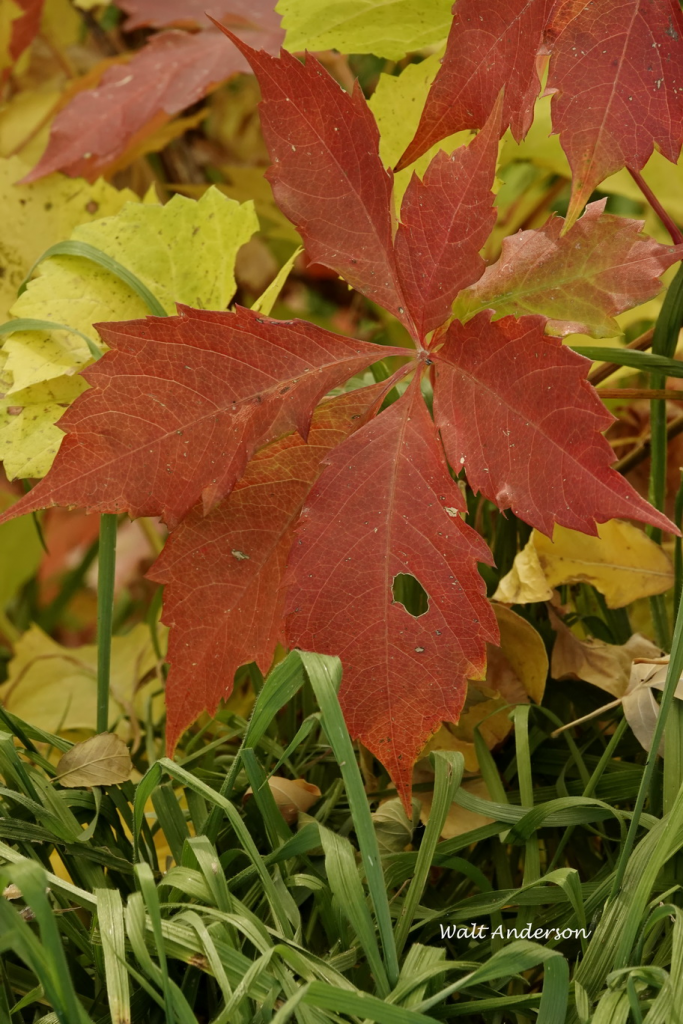
Vitaceae
by Walt Anderson
Two members of the Vitaceae (grape family) are widespread in Arizona riparian areas, including Arivaca Creek and Brown Canyon, and offer some of our choicest fall colors: deep red in the Woodbine (a close relative of the eastern Virginia Creeper) and yellow in Canyon Grape. Both are lianas (the proper name for a “woody vine”). Technically, vines are herbaceous, not woody (Tarzan would have had a short life if he had been swinging on vines!). Some beans, cucumbers, and squashes are good examples of vines. However, common usage says “vine” for the grape plant, and since you heard that on the grapevine, I probably cannot convert you to using “liana” for that plant.
Both our native species are climbers, supporting themselves on the more solid structures of trees or fences or walls. This gives them the advantage of rapid vertical growth without having to physically support themselves (much like the scions of the ultra-rich).
Let’s take a closer look at these woody climbers.
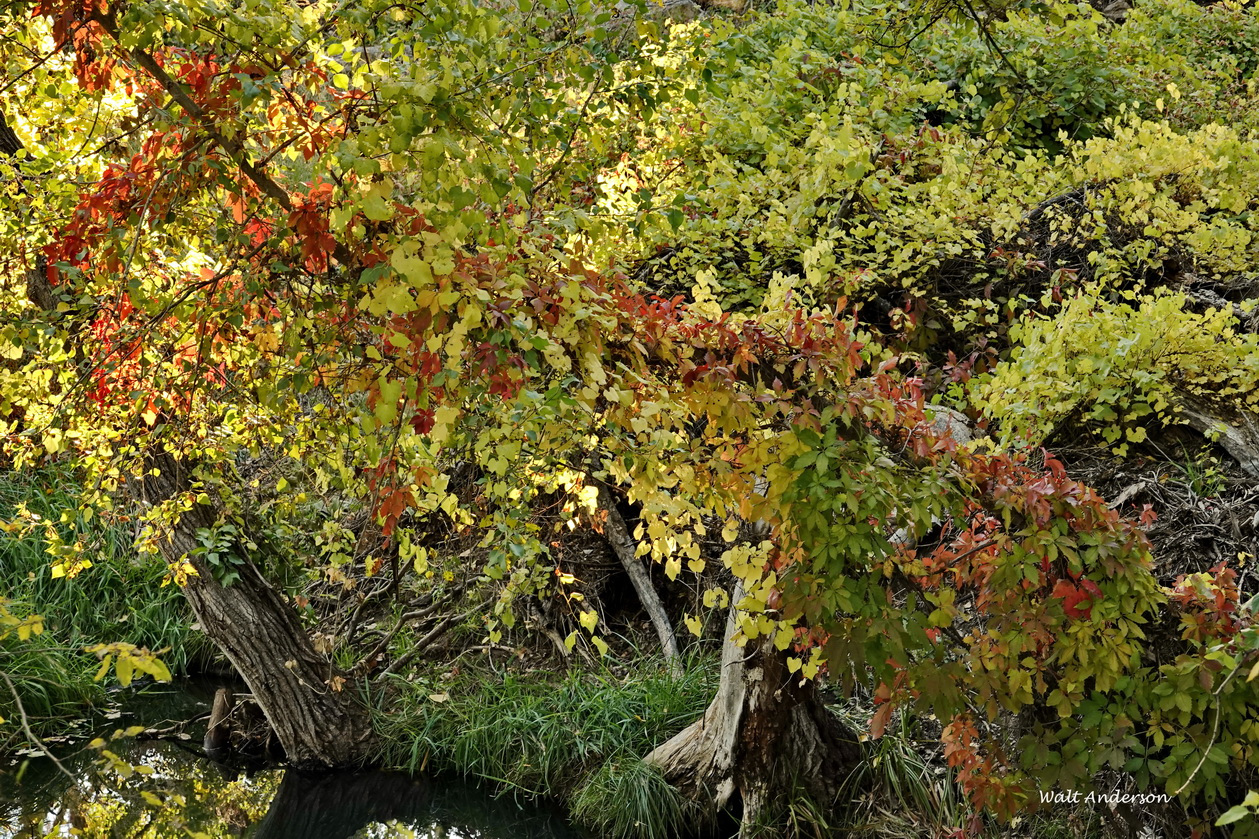
Both species prefer shady sites, often in riparian areas, and this means they are often close neighbors, growing together and creating vibrant splashes of complementary colors.
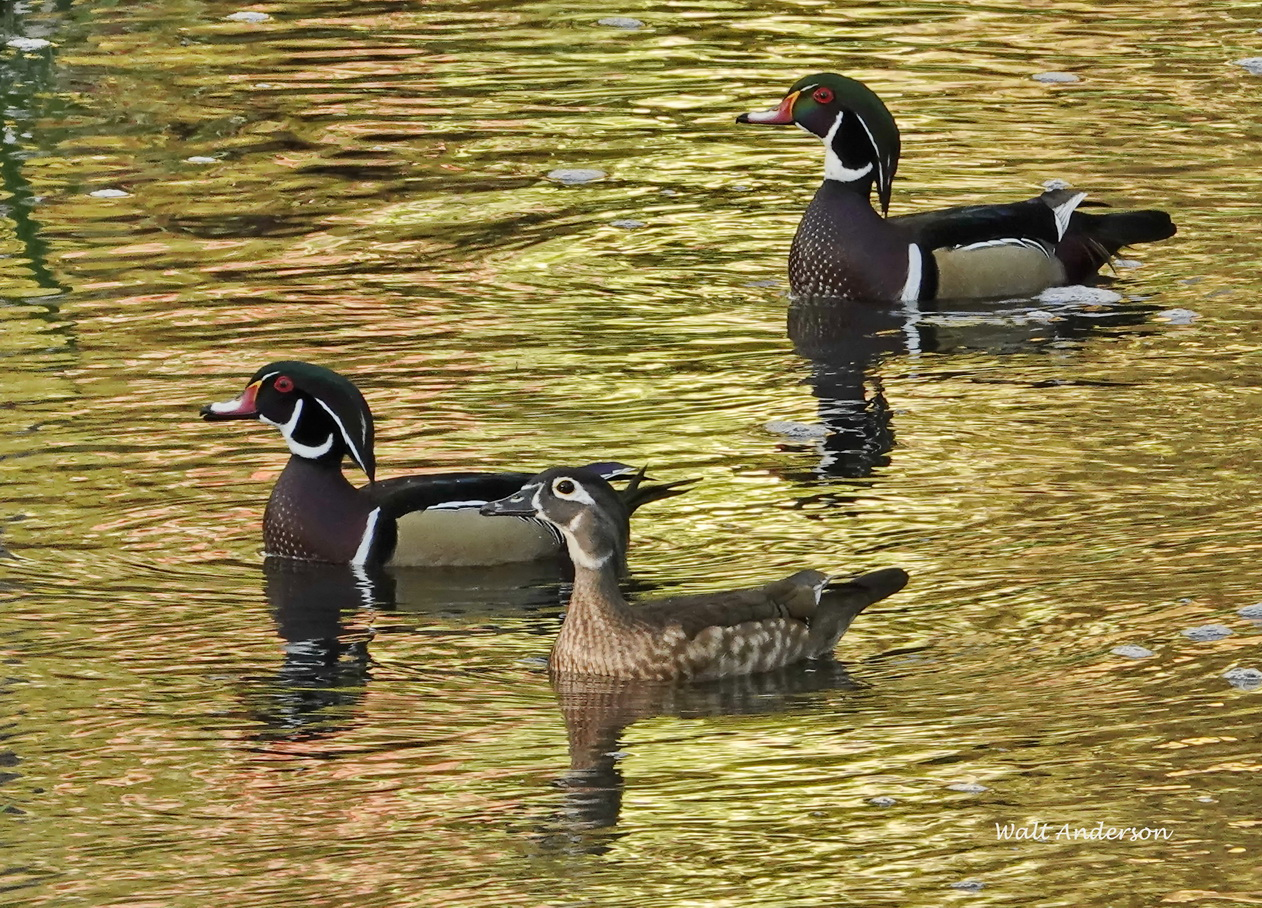
When they co-occur along a creek, they make lovely reflections for the Wood Ducks: orange-reds for Woodbine on the left and yellow-green for the Canyon Grape on the right. This and several others of the photos here were taken today just before I wrote this essay. Perfect timing.
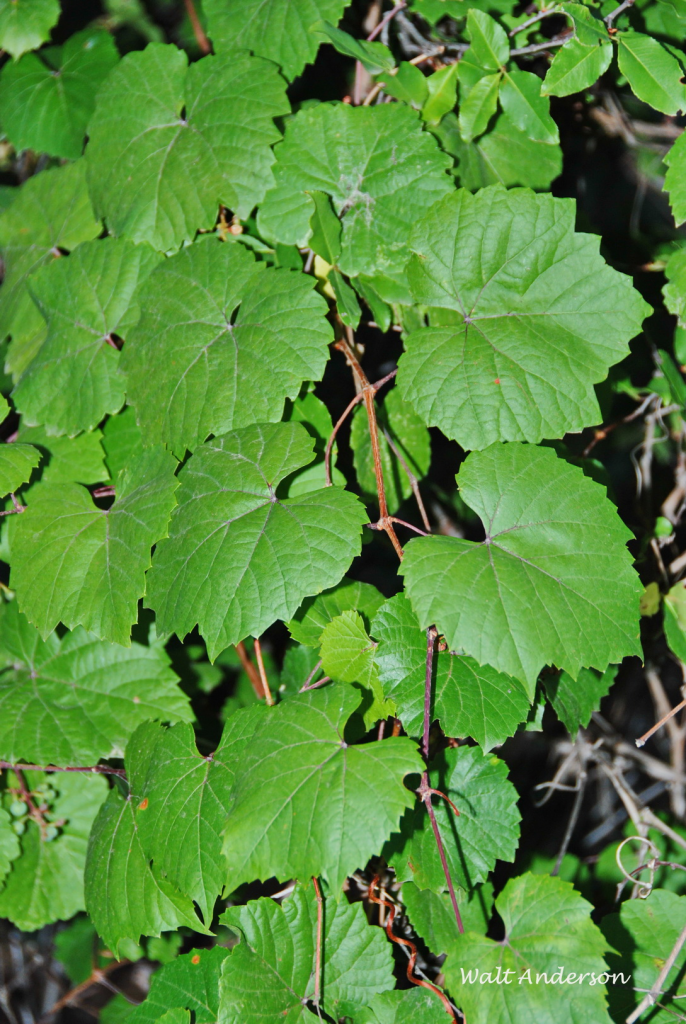
Both species are winter-deciduous, growing fresh leaves after spring frosts have ceased, but the woody lianas persist so they may get a head start with leaf growth if the plants upon which they climb leaf out later than they do. Tendrils opposite the leaf attachments allow them to attach to other surfaces. Here are new leaves, heart-shaped and toothed, on a Canyon Grape.
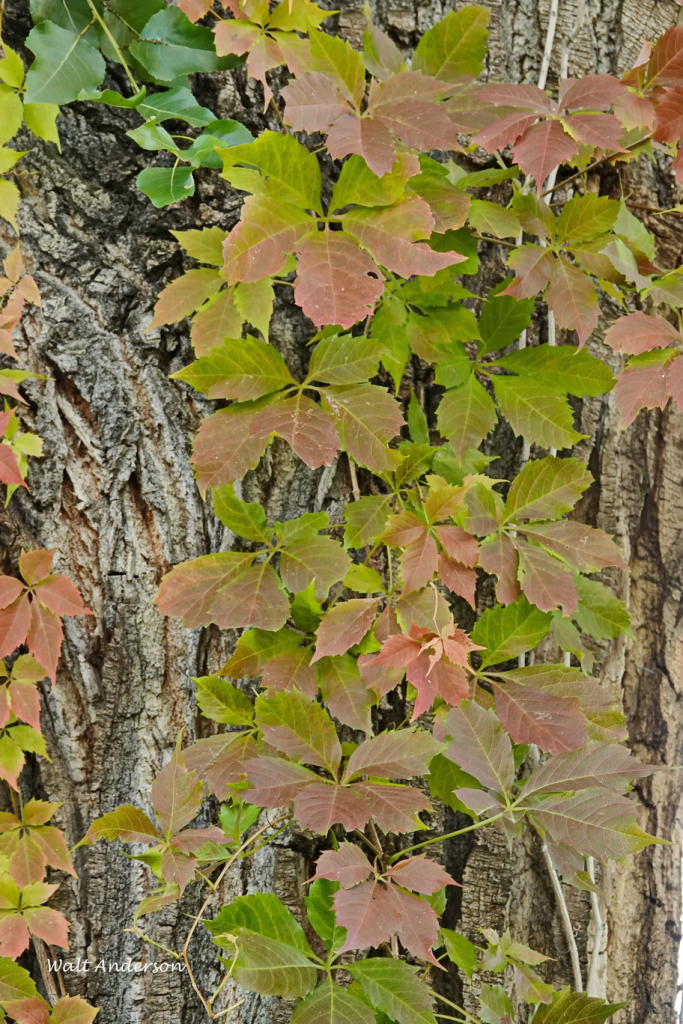
Woodbine (and Virginia Creeper) have palmately compound leaves with 5-7 leaflets. Note that Poison Ivy is another liana that can grow in similar shady situations with somewhat similar leaflets, but those are always in threes.
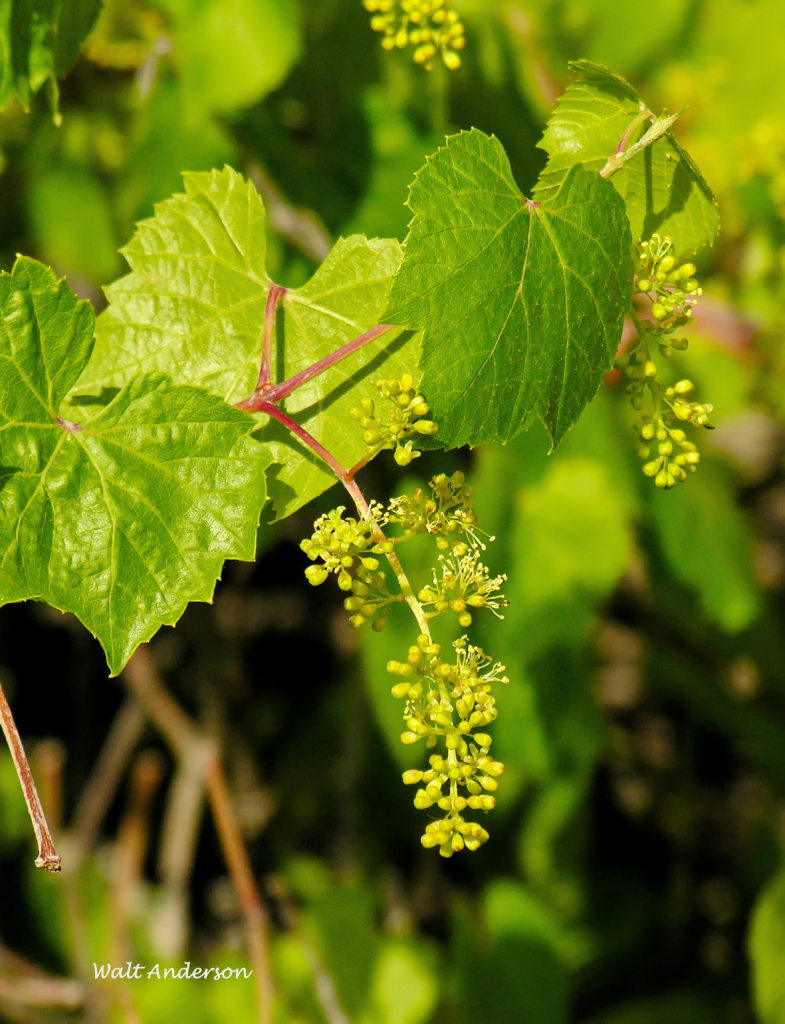
Both species have rather inconspicuous greenish-white flowers that are pollinated by insects.
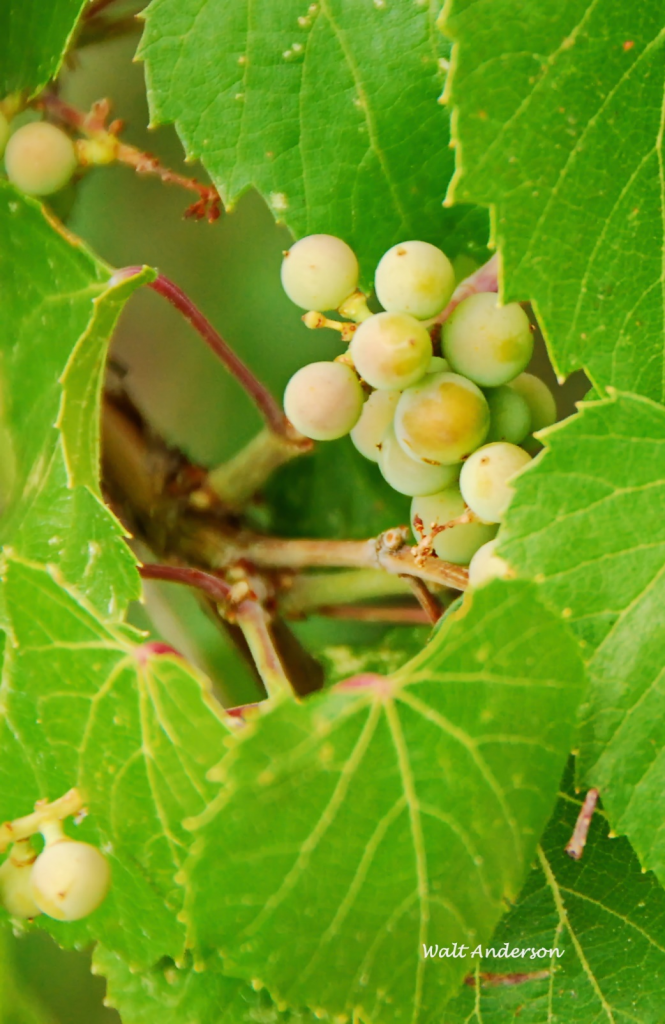
Grapenuts fans may be disappointed that the fruits are actually berries. However, when they are purple and ripe, they are eaten by many kinds of wildlife and humans too. Eat them too soon, and it’s sour grapes! Let them ripen, and you get a sweet reward, plus the seeds are ready for distribution. Wild grape seeds are large and the fleshy covering rather small, but this is the most efficient system for seed dispersal. Table and wine grapes, on the other hand, have been selected for their flesh. Viticulture (grapes are in the genus Vitis) is big business, and college degrees in viticulture are now popular. Thousands of acres of land are now converted to vineyards, and the winemakers have to be very attuned to terroir. They are literally terroirists.
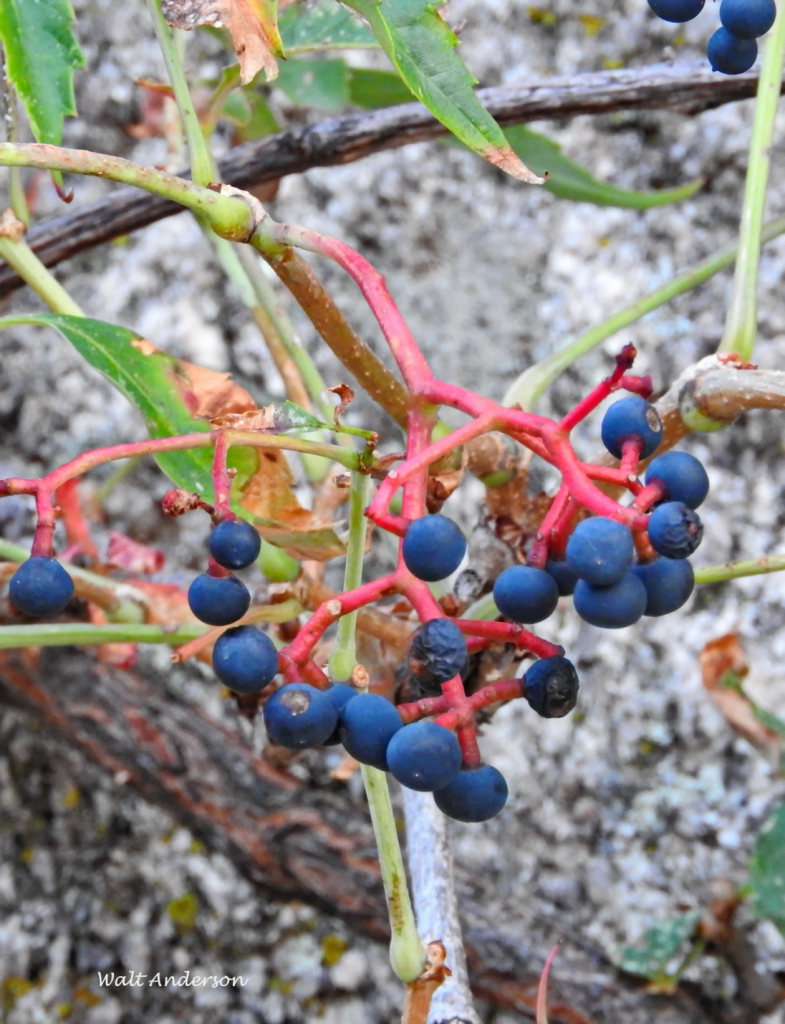
Woodbine/Virginia Creeper fruits may resemble grapes, but I caution against eating them, as they contain high concentrations of oxalic acid, toxic to us but eaten readily by birds and even by squirrels, deer, and skunks. Consider them false grapes of wrath.

Woodbine in full autumnal glory. The eastern Virginia Creeper is often planted as an ornamental, even here in Arizona. It grows quickly and can cover a fence or wall in short order. The complementary colors of red and green in autumn are wonderfully vivid and attractive.
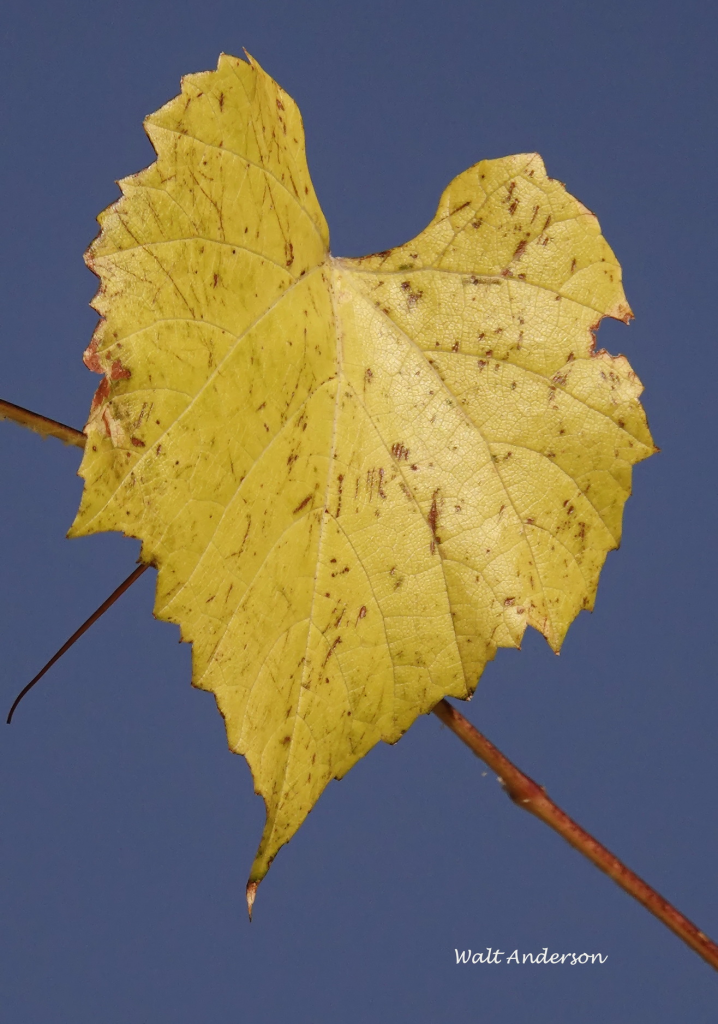
A yellow grape leaf against a blue Arizona sky.
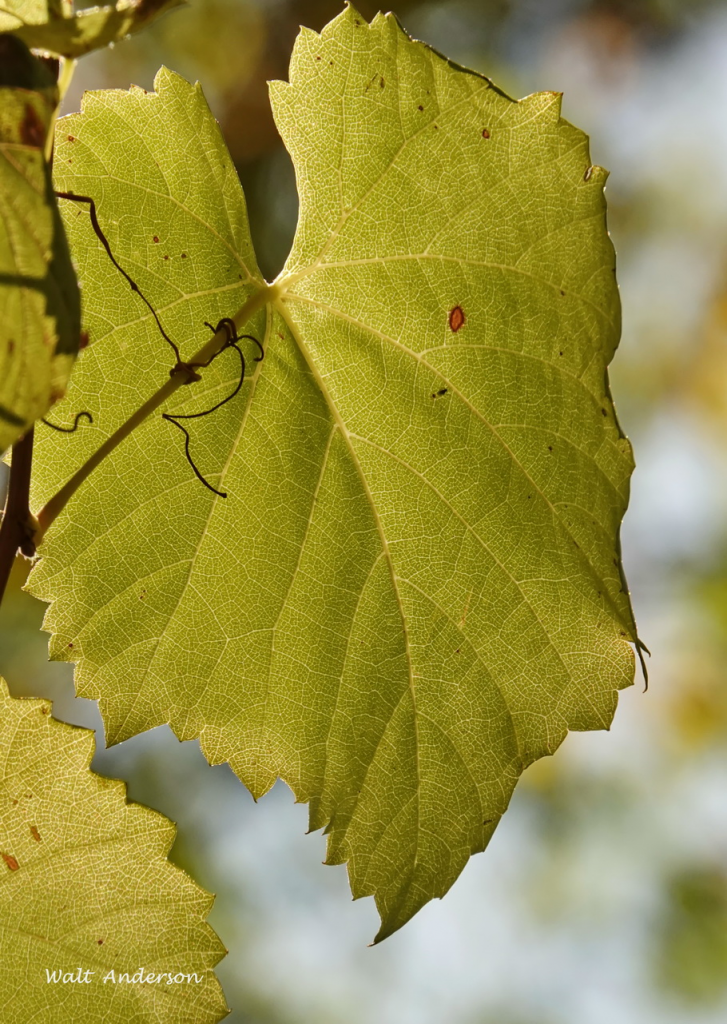
Backlighting reveals the intricate vein patterns of a grape leaf, almost like the fractals of a big river system like the Amazon.
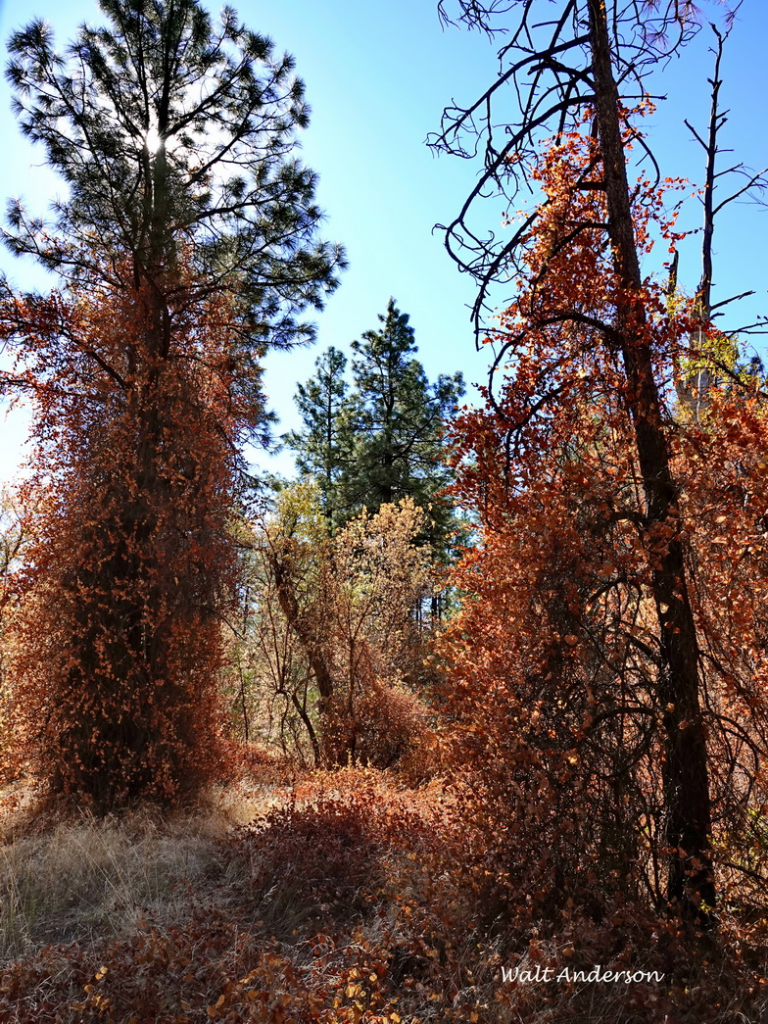
Wild grape arbors cloaking the lower trunks of Ponderosa Pines. If there is no vertical surface to climb, the lianas simply sprawl over the ground.
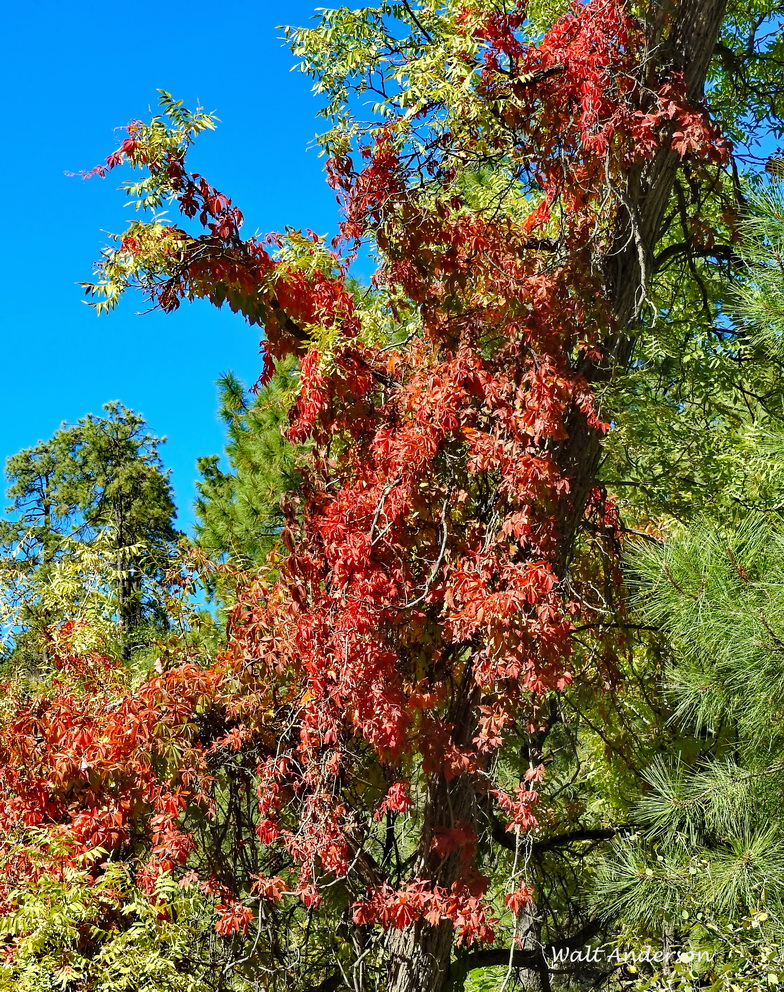
Woodbine ascending an Arizona Walnut.

Who says that Arizona lacks fall color? It’s there if you know where to look and take the time to seek it out. In these hectic times, we all could use a good healing dose of Vitaceae!
